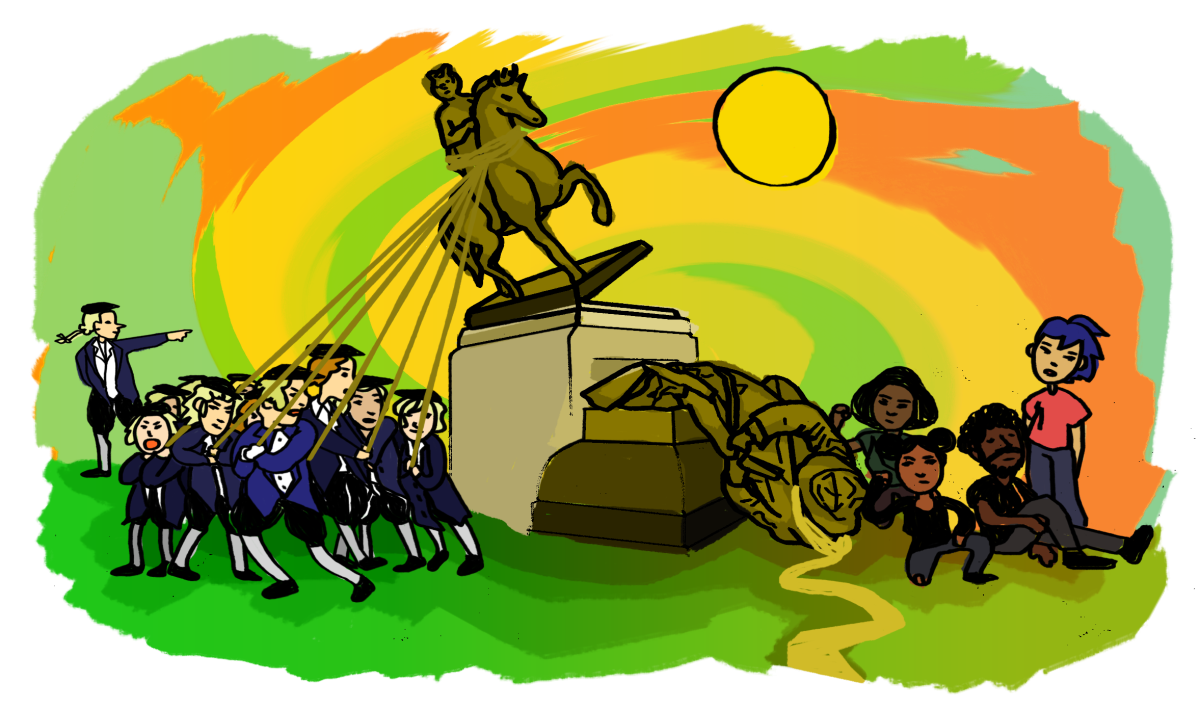History department faculty published a Google form to determine what topics students are concerned about and then accordingly provide information that would give students a better historical understanding of the issues.
On Aug. 18, during a regularly scheduled meeting for the history department, faculty began talking about President Richard Benson’s email sent out earlier that morning, dealing with the events in Charlottesville. Whitney Stewart, an assistant professor of historical studies, said Benson’s email was still fresh on the faculty members’ minds, and the department agreed that they should respond.
“We were motivated by our own concern for contemporary events and our concern for what students might be feeling and wanting to know,” she said. “That was our major impetus.”
Lora Burnett, a senior history lecturer, said the 21 professors and full-time lecturers decided to create an electronic form to ask students for their thoughts.
“It was really an effort from the entire department,” she said. “We decided that the best thing to do would be to see what issues students are interested in, and then provide with them a historical background so that they can understand the issue better.”
The form is a way for historians to do their work and demonstrate how they can help society, Burnett said.
“As historians, this is our job. When current events happen that people may not fully understand, we are the ones who can step in and give them that historical context to better comprehend and deal with it,” she said.
The form itself is one open-ended question with a short preface that reads: What current events are you interested in learning about from a historical perspective?
It is anonymous, so students’ questions will either be answered online or through a lecture series, Stewart said.
“After our meeting, we can decide what further steps we want to take, but I don’t see us taking down the form anytime soon,” she said. “We want to answer students’ questions for as long as we can, and if enough students have the same question, then we can consider having a lecture or something like that, but that’s not set in stone.”
Stewart said the expertise of the various faculty members in the department can allow students to see an issue in a new way. For example, Stewart teaches race relations in American history, and a misconception that she wants to see corrected regards post-Civil War monuments in the South, which to her and other historians, are more like symbols of Jim Crow and white supremacy than they are of southern pride.
The form is an example of a recent trend among historians to spread their message in more methods than simply peer-reviewed research, Stewart said. Historians are now transmitting information differently, and often through pop culture by appearing on television and publishing in magazines such as The Atlantic.
“It’s taking what can often be jargon filled and theoretically dense work and bringing it to the public in a way that is (more) appealing,” she said. “This is the time for us to come down from our ivory towers and make clear the arguments that we’ve known for a while.”
Stewart said the form could be a stepping stone for students to think critically.
“For me, it’s about making sure that my students feel the opportunity to learn more, and hopefully always feeling open to asking more questions,” she said. “When students feel they can ask questions of those who have dedicated their lives to their past, hopefully it will teach them to keep on asking questions even when they leave university.”

















